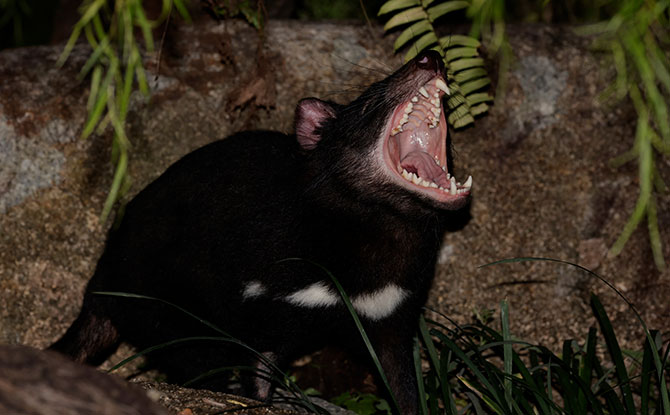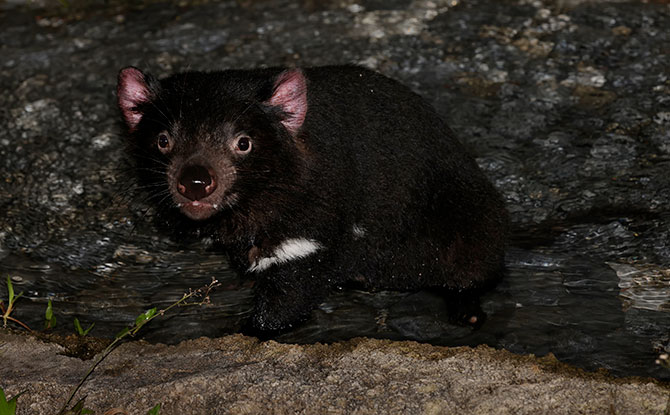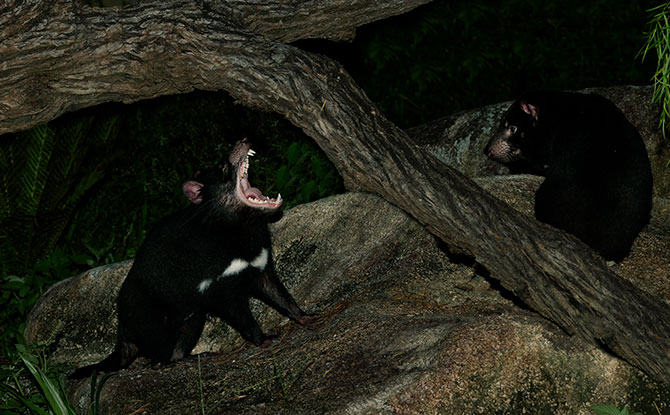
Crumpet, Snickers, Jesse and Panini. These are the names of the four female Tasmanian Devils that now call Singapore’s Night Safari home.
Tasmanian Devils at Singapore’s Night Safari

The Tasmanian Devils can be found at the Night Safari’s Wallaby Trail. The Devils are all around three years old. They arrived in Singapore on 7 October 2022 and were accompanied by senior keeper Adrain Mifsud from Trowunna Wildlife Saunctuary. They went through a mandatory 30-day quarantine upon arrival.
The four marsupials were unveiled to the public on the evening of 15 November 2022. the launch of the new Tasmania Devil exhibition was officiated by The Honourable William Hodgman, Australian High Commissioner to Singapore.
The exhibit is located at the end of Night Safari’s Wallaby Trail. It consists of two climate-controlled indoor exhibits and two expansive outdoor habitats. There area also back-of-house facilities consisting of indoor dens and outdoor yards, giving the nocturnal animals ample space to rest in the day.
Year-end Holiday Camps: Discover Fun and Exciting Camps for Kids; Book Early
Dec Fun: Get the Best Ideas for the School Holidays
The outdoor exhibits feature rockwork, water features and Australian trees such as Eucalyptus and shrubs like the Red Flowered Silky Oak to simulate the Devils’ wild dry shrubland habitat.
The four Devils are housed in pairs – Crumpet with Snickers, and Jesse with Panini. Each pair has access to their respective indoor and outdoor spaces.
Insurance Population

The Devils have arrived in Singapore as part of the insurance population managed by the Save the Tasmanian Devil Programme (STDP), led by the Department of Natural Resources and Environment Tasmania. The planning for their transfer to Singapore started back in 2018.
Tasmanian Devils are listed as endangered under the International Union for Conservation of Nature’s Red List. The Tasmanian Devil population has been rampaged by a type of transmissible cancer that is highly contagious, the Devil Facial Tumour Disease. It spreads when the animals bite each other while fighting or mating, and results in large facial tumours, which can prevent them from eating, eventually causing starvation.
The wild population of Tasmanian Devils has declined by at least 80 per cent in diseased areas since it was discovered in 1996.
“Our global insurance population is an important response to the significant decline of the Tasmanian Devil in the wild”, said David Schaap, Senior Wildlife Officer, Department of Natural Resources and Environment Tasmania.

















